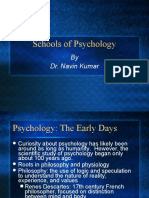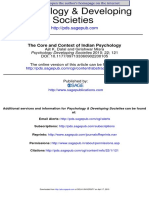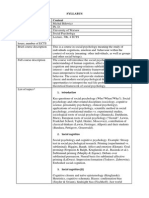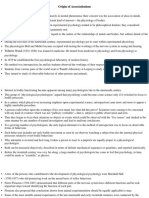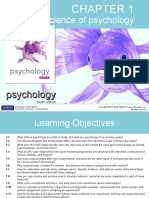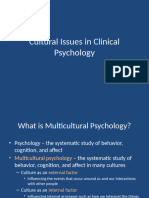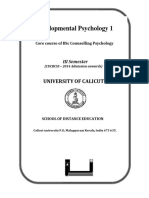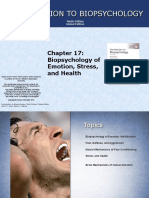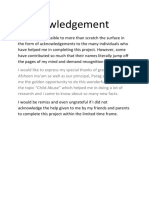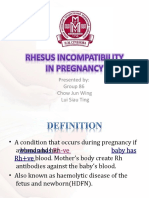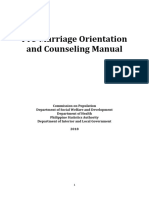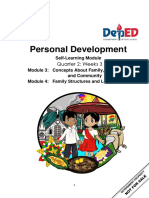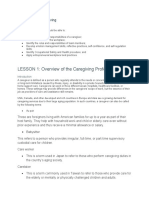THE 7UP SERIES
The 7 UP documentary series is a longitudinal study of 14 individuals from different economic
and social backgrounds who are interviewed every 7 years starting from the age of 7. The series
currently has 9 episodes thus spanning 56 years. The premise of the film is based on Aristotle's
quote “Give me a boy of 7 and I will give you the man.”
The 14 individuals are Andrew Brackfield, Charles Furneaux, John Brisby QC, Suzanne (Suzy)
Lusk, Jackie Bassett, Lynn Johnson, Susan (Sue) Davis, Tony Walker, Paul Kligerman, Symon
Basterfield, William Nicholas (Nick) Hitchon, Peter Davies, Neil Hughes, and Bruce Balden.
According to the hexagon theory of human development, an individual’s development is
impacted by several factors- psychology, ecology, sociology, anthropology, and other variants.
Development should be viewed from a holistic perspective and this film series does just that
providing us with various perspectives of their development.
Given below is an explanation of the development of 5 individuals – Tony, Suzanne, Bruce, Sue,
and Paul with the help of several developmental theories. The 5 individuals come from very
different backgrounds and their development is affected by several factors.
Tony, 35 is married and has 2 children. In the 35 up documentary, it’s shown that although he
always wanted to be a jockey since his childhood he couldn’t. At 21, he worked as a Cab driver
in London; at 28 he had his own cab. He then wanted to open his pub and did open one in
partnership with his brother-in-law but they had different ideas and visions which eventually lead
to it shutting down. At 28 he took acting lessons and currently at 35 he works as an extra. The
constant change in career paths indicates a conflict in Erikson’s psychosocial stage of Identity vs.
Role Confusion. Conflict in this stage results in to individual who are not sure of whom they are,
what they like and they tend to drift from one job or relationship to another. (Erikson, 1963).
Tony is unable to commit to a particular career and when asked about it he says defensively “I
have followed my ambitions and I have no regrets except not making it as a jockey, I have a
family to run and that is my job”. The virtue in this stage is Fidelity and having not been able to
develop it is also seen to have an impact on Tony’s commitment to his wife as he admits that
being in a monogamous relationship is becoming quite hard. Tony’s lack of commitment to a
�particular career path can also be understood based on James Marcia’s approach which is an
update to Erikson’s. Marcia (1980) proposed four categories of adolescent identity: Identity
achievement, Identity foreclosure, Moratorium, and Identity diffusion. Tony seems to be in the
identity diffusion category. He is constantly shifting from one thing to the next and this has also
resulted in him being unable to form close relationships apart from his wife. He is socially
withdrawn. While his wife is seen meeting up with her friends often he is not seen socially
involved.
He takes his kids every weekend to stables and teaches them riding and his wife also states how
he spoils the kids and he also mentions “I see myself in them when they are riding. After all, it's
all about providing your kids with opportunities you never had isn’t it?” Bronfenbrenner (1979)
gave the theory of ecological systems according to which five levels of the environment
simultaneously influence individuals. Considering Tony comes from an underprivileged
background, it is seen how from this theory, the macrosystem (socio-economics status) has
played a role in shaping his thoughts about the upbringing of his children.
Suzy 35 is happily married and has 2 children. She comes from a privileged background. Her
parents got divorced when she was 14 and this event in her microsystem (Bronfenbrenner's
theory) did have an impact on her thoughts about marriage. Growing up if a person’s parents
separate or get divorced, there is a high possibility that it might affect their view on marriage or
even relationships, and in Suzy’s case, it resulted in her developing a negative opinion about
marriage. At 21 she was a chain smoker and came across as uptight and unhappy. When she was
asked about marriage she stated “I am very cynical about marriage and I don’t want kids either.”
Contrary to this at 35 she is seen happily married with 2 children and she credits her marriage by
bringing her positivity and happiness. She hopes that she can provide her children with a good,
stable home environment and that they won’t feel lost as she did. She also mentions that she
dislikes being on the show as the show opens up old wounds that she would rather forget thus
also showing the effect of her environment on her.
Bruce 35, works as a teacher for immigrant students in London and is in Sylhet, Bangladesh
teaching for one term. At age 7, he was in a boarding school and had said that his heart’s desire
was to see his dad who was soldier 6000 miles away but, at 35 it becomes evident that he could
�never build a bond with his father who had passed away 3 years back. He states that he would
have liked to miss his father had they been close; this can be understood in terms of Bowlby’s
attachment theory. Attachment is a deep and enduring emotional bond that connects one person
to another across time and space (Ainsworth, 1973; Bowlby, 1969). Bruce could never build a
secure attachment with his father as a child and felt quite abandoned. This has also affected his
romantic relationships, as a child’s relationship with his/her parents determines the relationship
with others. At the age of 7, Bruce had said that he had a girlfriend. At 14 he had no girlfriend
and at 21 he had said he needed time to think about it. At 28, he wanted his own family and at 35
he is single, believes that he is quite shy, awkward and he hasn’t found the right girl yet. Bruce is
probably skeptical about marriage because somewhere deep inside even though he longs it, he is
afraid of building close, stable relationships and still has the fear of abandonment.
Sue, 35 is a single divorced parent. She got married at 24 and has two children. Sue is seen to
lack a sense of self. She says that she got married too young and states “when you do you miss
things, you miss that crucial stage of being yourself because the minute you get married you are
no longer a single being, you are in a partnership”. According to Carol Gilligan (2004), women
develop identity through the establishment of relationships. She proposed three stages of moral
development in women, the first is “Orientation toward individual survival”, the second stage is
“goodness as self-sacrifice” and the final stage is “Morality of non-violence” where a moral
equivalence is established between self and others. At 24, Sue had failed in the third stage. At 35,
she has a sense of belonging to her friend circle as most of them are divorced or separated and
there are common problems. She now works part-time for a building society.
Paul 35 is married with two children and is settled in Melbourne. He has had a pretty rough
childhood which resulted in conflict in the trust vs. mistrust stage of Erikson's. His parents got
divorced at a young age and after having spent a year in boarding school, he immigrated with his
father to Australia who re-married there. Paul also lacks a secure attachment with his father and
his step-mother. He mentions that he was not even close to them. When asked what he would do
differently from his father he said that he is working to have more close contact relationship with
his children. He mentions that even hugging his father was an unusual event for the both of them
thus showing the lack of love and affection. This has also manifested in his relationship with his
wife, at 21 he had stated that he had a hard time expressing his love to her. Paul also has a fear of
�abandonment and his wife Sue states “every time we fight his immediate reaction is leave me”.
He also lacks confidence indicating conflict in Erikson’s Psychosocial stage of Autonomy vs.
Shame/ Doubt. At 21, he was working as a bricklayer and at 28 he was a sub-contractor but it did
not work out. He now does odd jobs in the construction field. Sue states that he sort of has a
defeatist, hopeless attitude and that his lack of confidence probably stems from the lack of
security as a child, having to move to a whole new country, and losing one parent did affect his
personality a lot.
This documentary series provides a lot of insight into human development and how the
individual is influenced by both his material and human environment and in this respect politics,
economics and ecology are influential as they affect the processes within the individual.
REFERENCES:
Ph.D., R. F. S. (2013). Development Across the Life Span (7th Edition) (7th ed.). Pearson.
Khalakdina, M. (2008). Human Development in the Indian Context: A Socio-cultural Focus
Vol.1 (First ed.). SAGE Publications Pvt. Ltd.
Mcleod, S. (2017, February 5). Attachment Theory. Simply Psychology.
https://www.simplypsychology.org/attachment.html





